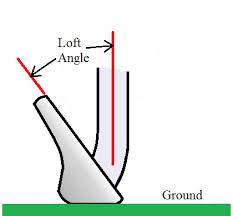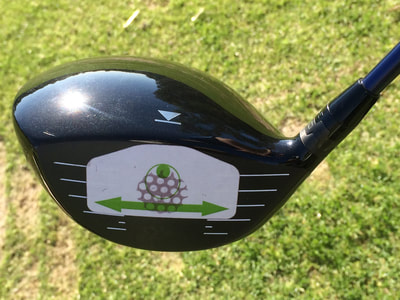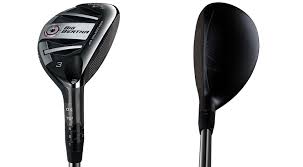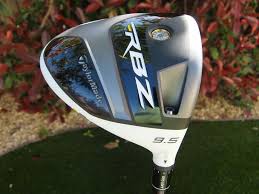Golf 101
Golf Course/ Scorecard
A regulation size golf course is 18 holes and is typically a Par 72. Each 9 holes is usually made up of 2 par 3's, 2 par 5's, and 5 par 4's for a total par of 36. First 9 is known as the front 9 (out). The second 9 is known as the back 9 (in). Yardage will range from 5,000 - 7,000 yards.
Tijeras Creek GC has 6 sets of tee boxes to choose from. See below for yardages, course/slope ratings and suggestions for choosing the set of tees you should play from:
Black - 7,003 yards - (73.8/136) Expert (pro) golfers only - Drive the ball over 250 yards
Blue - 6,580 yards - (71.2/130) Low handicap (1-9) golfers - Drive the ball 230
White - 6,206 yards - (69.5/125) Mid handicap golfers (10-18) Drive the ball 200 yards
Green - 5,797 yards - (67.8/119) Higher handicap golfers (18-36) Drive the ball 180 yards
Red - 5,130 yards - (70.7/129) Higher handicap golfers (18-36) Drive the ball 150 yards
Yellow - 4,105 yards - (60.1/100) Beginning golfer
Tijeras Creek GC has 6 sets of tee boxes to choose from. See below for yardages, course/slope ratings and suggestions for choosing the set of tees you should play from:
Black - 7,003 yards - (73.8/136) Expert (pro) golfers only - Drive the ball over 250 yards
Blue - 6,580 yards - (71.2/130) Low handicap (1-9) golfers - Drive the ball 230
White - 6,206 yards - (69.5/125) Mid handicap golfers (10-18) Drive the ball 200 yards
Green - 5,797 yards - (67.8/119) Higher handicap golfers (18-36) Drive the ball 180 yards
Red - 5,130 yards - (70.7/129) Higher handicap golfers (18-36) Drive the ball 150 yards
Yellow - 4,105 yards - (60.1/100) Beginning golfer
Scoring
Quadruple Bogey - 4 over par (Example- on a par 3 hole (+4) = 7)
Triple Bogey - 3 over par
Double Bogey - 2 over par
Bogey - 1 over par
Par- Even
Birdie - 1 under par (Example- on a Par 5 hole (-1) = 4)
Eagle - 2 under par (Example - on a Par 5 hole (-2) = 3)
Double Eagle (Albatross) - 3 under par (Example - on a Par 5 (-3) = 2)
Hole in One - On a Par 3 to hole out from the tee box in 1 shot.
Triple Bogey - 3 over par
Double Bogey - 2 over par
Bogey - 1 over par
Par- Even
Birdie - 1 under par (Example- on a Par 5 hole (-1) = 4)
Eagle - 2 under par (Example - on a Par 5 hole (-2) = 3)
Double Eagle (Albatross) - 3 under par (Example - on a Par 5 (-3) = 2)
Hole in One - On a Par 3 to hole out from the tee box in 1 shot.
Handicap
To learn all about how Handicaps work click the USGA golf link below
Golf Clubs
The rules of golf allow a golfer to have up to 14 clubs in their bag. Which clubs they put in their bag is up to them. The length and loft on each club differs depending on the club. The lower numbered clubs have less loft and increase in length. (Typically each club differs by 4 degrees in loft and 1/2" in length.)
Not all manufacturers (Titliest, Callaway, Ping, Taylormade, Adams, Cleveland - just to name a few) use the same name when identifying a club. I have listed all below:
Wedges:
Lob Wedge / LW / L / 60 - This is usually the highest loft club with 60 degrees. (Sole of club on ground - angle of clubface)
Sand Wedge / SW / S / 56 - This club has 56 degrees of loft and can be used on grass as well as out of the sand.
Gap Wedge / GW / G / A (Approach) / D (Dual) / 52 - This club has a loft between 51-54 degrees depending on the manufacture.
Pitching Wedge / PW / W / P / 48 - This club has a loft between 47-50 degrees
Wedges:
Lob Wedge / LW / L / 60 - This is usually the highest loft club with 60 degrees. (Sole of club on ground - angle of clubface)
Sand Wedge / SW / S / 56 - This club has 56 degrees of loft and can be used on grass as well as out of the sand.
Gap Wedge / GW / G / A (Approach) / D (Dual) / 52 - This club has a loft between 51-54 degrees depending on the manufacture.
Pitching Wedge / PW / W / P / 48 - This club has a loft between 47-50 degrees
Irons: Things become a little easier here, simply numbered 9,8,7,6,5,4,3 - as the number gets lower the loft decreases. Each manufacture may have a slightly different loft. You can search online for the brand and lofts for a manufacturer.
Here are my lofts on my Titleist AP2 irons:
Notice 4 degree difference between each club. This will amount to a 10 yard difference between clubs. This is assuming you hit the sweet spot on the club face. If you miss the sweet spot you can loose up to 10% of possible distance with that club.
9 iron- 43 degrees
8 iron - 39 degrees
7 iron - 35 degrees
6 iron - 31 degrees
5 iron - 27 degrees
Here are my lofts on my Titleist AP2 irons:
Notice 4 degree difference between each club. This will amount to a 10 yard difference between clubs. This is assuming you hit the sweet spot on the club face. If you miss the sweet spot you can loose up to 10% of possible distance with that club.
9 iron- 43 degrees
8 iron - 39 degrees
7 iron - 35 degrees
6 iron - 31 degrees
5 iron - 27 degrees
Long Iron Replacements known as: Rescue, Hybrid, 4H, 3H. These clubs are used in place of having a 3, 4 iron.
Specialty Fairway Woods (metal): 11, 9, 7 (these replace a 5, 4, or 3 iron)
Standard Fairway Woods (metal): 5 wood - 19/20 degrees, 3 wood - 15 degrees.
Driver (metal): 1 wood - loft ranges from 8-12 degrees. HL - is a high loft driver 13-15 degrees.
Putter: Used on the putting green
Specialty Fairway Woods (metal): 11, 9, 7 (these replace a 5, 4, or 3 iron)
Standard Fairway Woods (metal): 5 wood - 19/20 degrees, 3 wood - 15 degrees.
Driver (metal): 1 wood - loft ranges from 8-12 degrees. HL - is a high loft driver 13-15 degrees.
Putter: Used on the putting green
Common Terminology
Here is a list of golf vocabulary you will become familiar with as you play the game.
1. Fat Shot / Chunked Shot- Hit ground too far behind ball. Loose a lot of distance. Ball may or may not go in air.
2. Thin Shot / Skinny Shot- Hit no ground, ball goes in air, but loose a little distance.
3. Topped shot - Hit bottom of club with the top of the ball. The shot will not get in the air.
4. Bladed shot - Hit middle of ball with the leading edge of club. Shot will fly barely off the ground. Most commonly seen when chipping.
5. Solid - Flush - Pure - Great shot in the center of the club face, with a small divot IN FRONT of where the ball was on the ground.
6. Chipping / Bump and Run- A shot played from close to the edge of the green. The ball travels low and has roll.
7. Pitching - A shot played further away from the green when needing to fly over objects such as bunkers, trees, cart path, etc.
8. Bunker - It is the sand traps on the course. There are 2 kinds - Greenside bunkers are next to a green, Fairway bunkers are located in the fairway.
9. Putting - This is what we do on the green. Use our putting, a flat face club to roll ball on the putting green.
10. Tee Time - This is your starting time to play your round. Usually there are 4 people assigned to a tee time, the course has tee times usually every 7-9 minutes. I.e 7:00am,7:07,7:14,7:21. Private clubs often have 10 minute intervals between tee times. For a Four-some to complete play of a hole It should take no more than 15 minutes. To play 18 holes it would take between 4 hours and 15 minutes to 4 and half hours.
11. Shotgun Start - This is when all players in a tournament start at the same time. Each 4 some is assigned a hole to begin on, you can have up to 144 players for a full shotgun, 2 groups of 4 players on each hole. This way everyone will start and finish at the same time.
12. Scramble Format- There is one score for a team of 4 players. Each player tees off and then you all hit from the best shot, continue this until the ball is holed for a single score on the hole. This format is used a lot in fun or charity tournaments.
13. Best Ball Format - This is a format used in tournaments when you would take the best score of the 4 players on a team, sometimes they will take the 2 best scores of the 4 on the team. Each player has to play their own ball and get a score for each hole.
14. Four-some - This is 4 golfers playing as a group at same tee time. Sometimes 2 people will join 2 others (Two-some) to make a four-some.
15. Two-some - This is 2 golfers playing as a group at same tee time.
16. Match Play - This is a format which you play against a person and the score is kept by who won the hole. For instance, if on the first hole I made a 3 and my opponent made a 5, I am one up in the match. You only count holes won, not strokes.
17. Up and Down - This is when you have missed the green and hit a short game shot onto green and then make the putt. Total of 2 shots, up and down. Usually used when a par is saved after missing the green in regulation.
18. GIR - Green in Regulation - To hit a green in regulation (GIR) you would be on the green with 2 strokes left to use to make your par. So for example on a Par 5 you would be on the green in 3, on a Par 3 you would be on in 1.
1. Fat Shot / Chunked Shot- Hit ground too far behind ball. Loose a lot of distance. Ball may or may not go in air.
2. Thin Shot / Skinny Shot- Hit no ground, ball goes in air, but loose a little distance.
3. Topped shot - Hit bottom of club with the top of the ball. The shot will not get in the air.
4. Bladed shot - Hit middle of ball with the leading edge of club. Shot will fly barely off the ground. Most commonly seen when chipping.
5. Solid - Flush - Pure - Great shot in the center of the club face, with a small divot IN FRONT of where the ball was on the ground.
6. Chipping / Bump and Run- A shot played from close to the edge of the green. The ball travels low and has roll.
7. Pitching - A shot played further away from the green when needing to fly over objects such as bunkers, trees, cart path, etc.
8. Bunker - It is the sand traps on the course. There are 2 kinds - Greenside bunkers are next to a green, Fairway bunkers are located in the fairway.
9. Putting - This is what we do on the green. Use our putting, a flat face club to roll ball on the putting green.
10. Tee Time - This is your starting time to play your round. Usually there are 4 people assigned to a tee time, the course has tee times usually every 7-9 minutes. I.e 7:00am,7:07,7:14,7:21. Private clubs often have 10 minute intervals between tee times. For a Four-some to complete play of a hole It should take no more than 15 minutes. To play 18 holes it would take between 4 hours and 15 minutes to 4 and half hours.
11. Shotgun Start - This is when all players in a tournament start at the same time. Each 4 some is assigned a hole to begin on, you can have up to 144 players for a full shotgun, 2 groups of 4 players on each hole. This way everyone will start and finish at the same time.
12. Scramble Format- There is one score for a team of 4 players. Each player tees off and then you all hit from the best shot, continue this until the ball is holed for a single score on the hole. This format is used a lot in fun or charity tournaments.
13. Best Ball Format - This is a format used in tournaments when you would take the best score of the 4 players on a team, sometimes they will take the 2 best scores of the 4 on the team. Each player has to play their own ball and get a score for each hole.
14. Four-some - This is 4 golfers playing as a group at same tee time. Sometimes 2 people will join 2 others (Two-some) to make a four-some.
15. Two-some - This is 2 golfers playing as a group at same tee time.
16. Match Play - This is a format which you play against a person and the score is kept by who won the hole. For instance, if on the first hole I made a 3 and my opponent made a 5, I am one up in the match. You only count holes won, not strokes.
17. Up and Down - This is when you have missed the green and hit a short game shot onto green and then make the putt. Total of 2 shots, up and down. Usually used when a par is saved after missing the green in regulation.
18. GIR - Green in Regulation - To hit a green in regulation (GIR) you would be on the green with 2 strokes left to use to make your par. So for example on a Par 5 you would be on the green in 3, on a Par 3 you would be on in 1.
PRE-SWING Fundamentals for Full Swing-
Grip, Aim, and Setup/Posture
Keys to a good swing are sound pre-swing fundamentals:
These fundamentals are important to allow the club to swing and your body to move properly. Incorrect placement of your hands, grip pressure, poor alignment, or not proper posture will lead to swing faults. These areas will always need your attention to ensure positions are correct. It's easy to get off track! Using a mirror at home is a great way to check your posture. On the range use alignment rods on the ground to verify your alignment is correct. Do 5 minutes a day of only grip placement and tension awareness holding the club.
Check out the videos below.
Check out the videos below.
Grip- Placement more in fingers vs. palms (lower in hand - baby finger "heel pad)", awareness to maintain same pressure during entire swing, no tighter than a 4 on a scale of 1-10 (tightest 10)
Aim- Feet, Knees, Hips, and Shoulders are parallel to the target line, use aiming lines on clubface - square pointing down target line with leading edge of clubface. Use an intermediate target (a few feet in front of ball) to aim down an imaginary line to target. Use alignment rods when practicing to check your aim. Tour pros always practice their alignment.
Setup/Posture- Tilt hip bones downward to point toward ground, feet shoulder width apart, athletic balance, slight knee flex, arms hang down soft not firm. If your hamstrings or hip flexors are tight it will make getting into a proper posture more difficult. Stretching Exercises may help you achieve better posture.
Pro Swing Model - Adam Scott
ONLINE DIGITAL INSTRUCTIONAL PROGRAM
Get INSTANT Permanent Access Upon Purchase
LPGA Master Professional Michelle Dubé is your coach. View drills using your electronic devices- Ipad, IPhone, or Laptop

Join Now
Membership Includes:
Permanent Access to Video Drill's Library, over 70 drills to learn from
Permanent Access to Video Drill's Library, over 70 drills to learn from
- Grip, Aim, and Setup
- Full Swing Drills -takeaway, backswing and downswing
- Short Game Drills- putt, chip, pitching, and bunker
- Golf Fitness Exercises
- Club Fitting Videos
- Mental game and practice techniques videos
- 9 Keys to play your best golf informational sheets (17 game improvement pages)
- Short Game Assessment Evaluation
- Skills Assessment Page
- Mental Game On Course Focus
- Pre-Round Warm Up Routine










